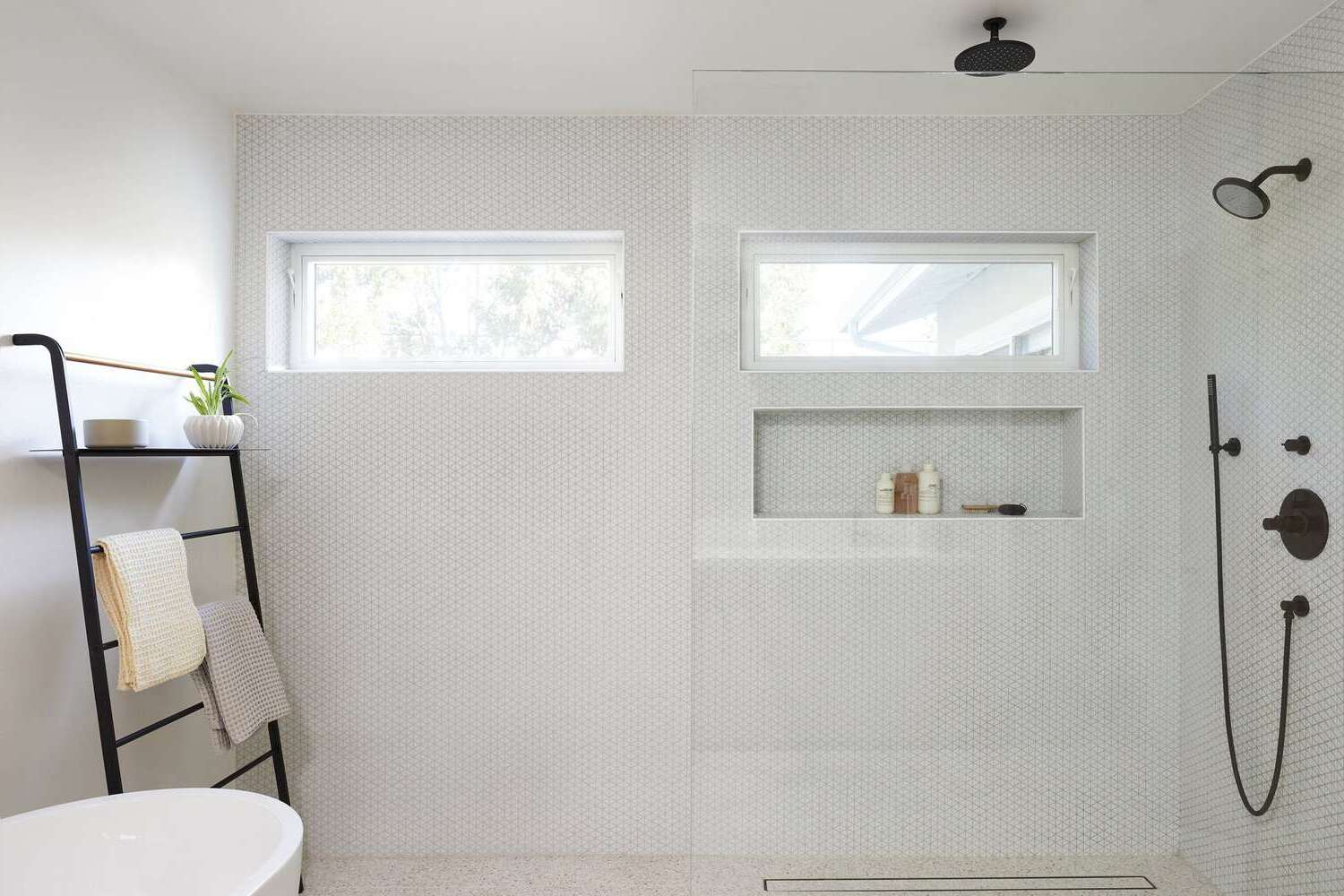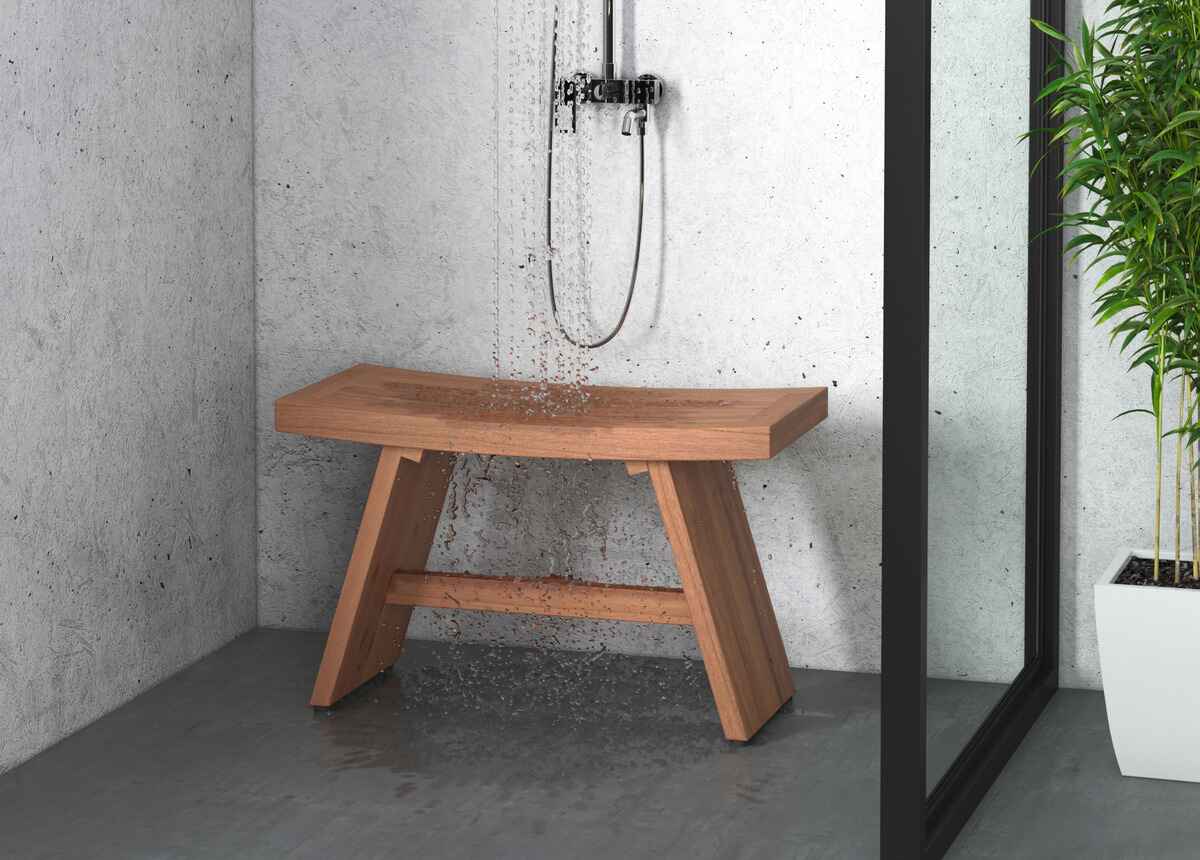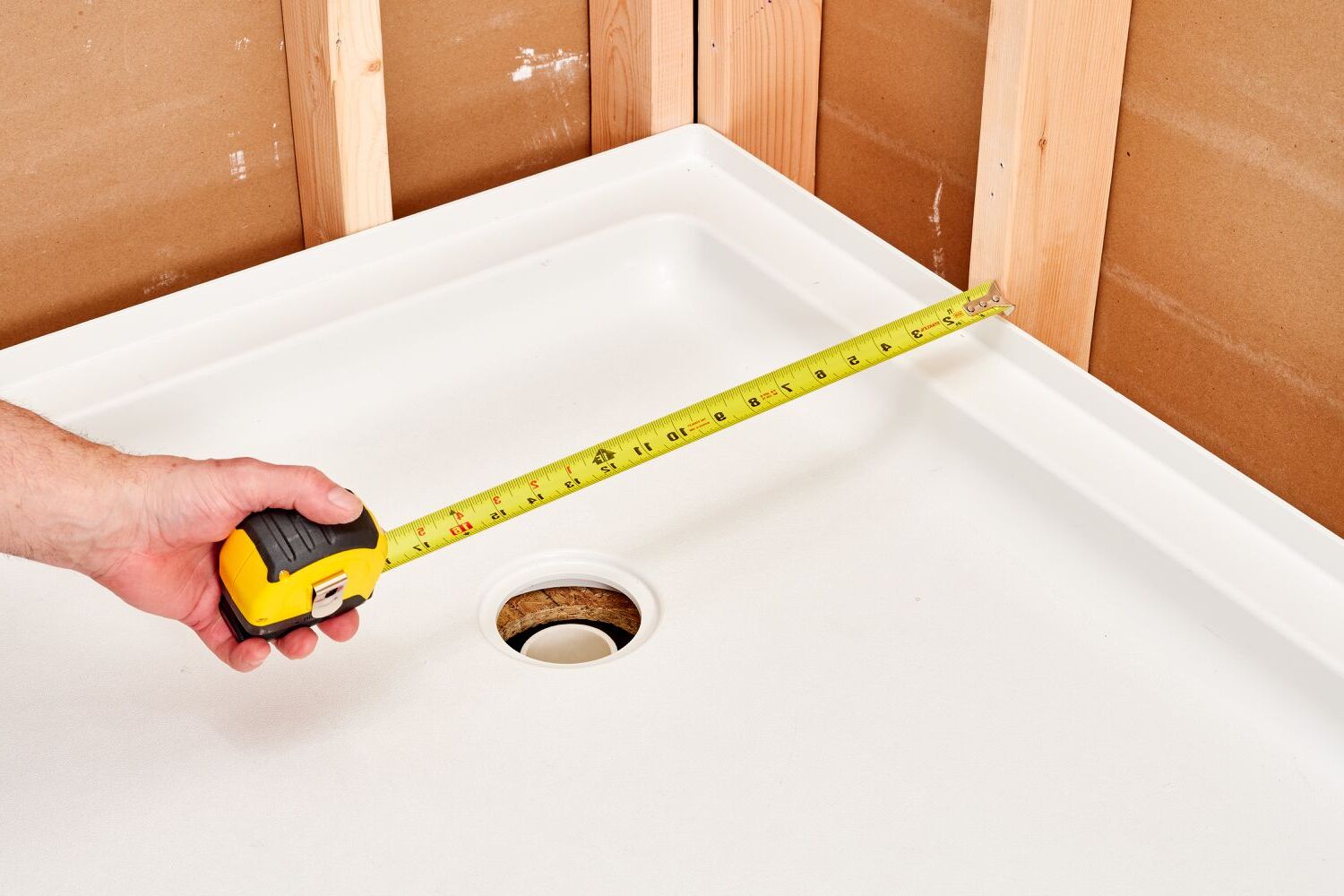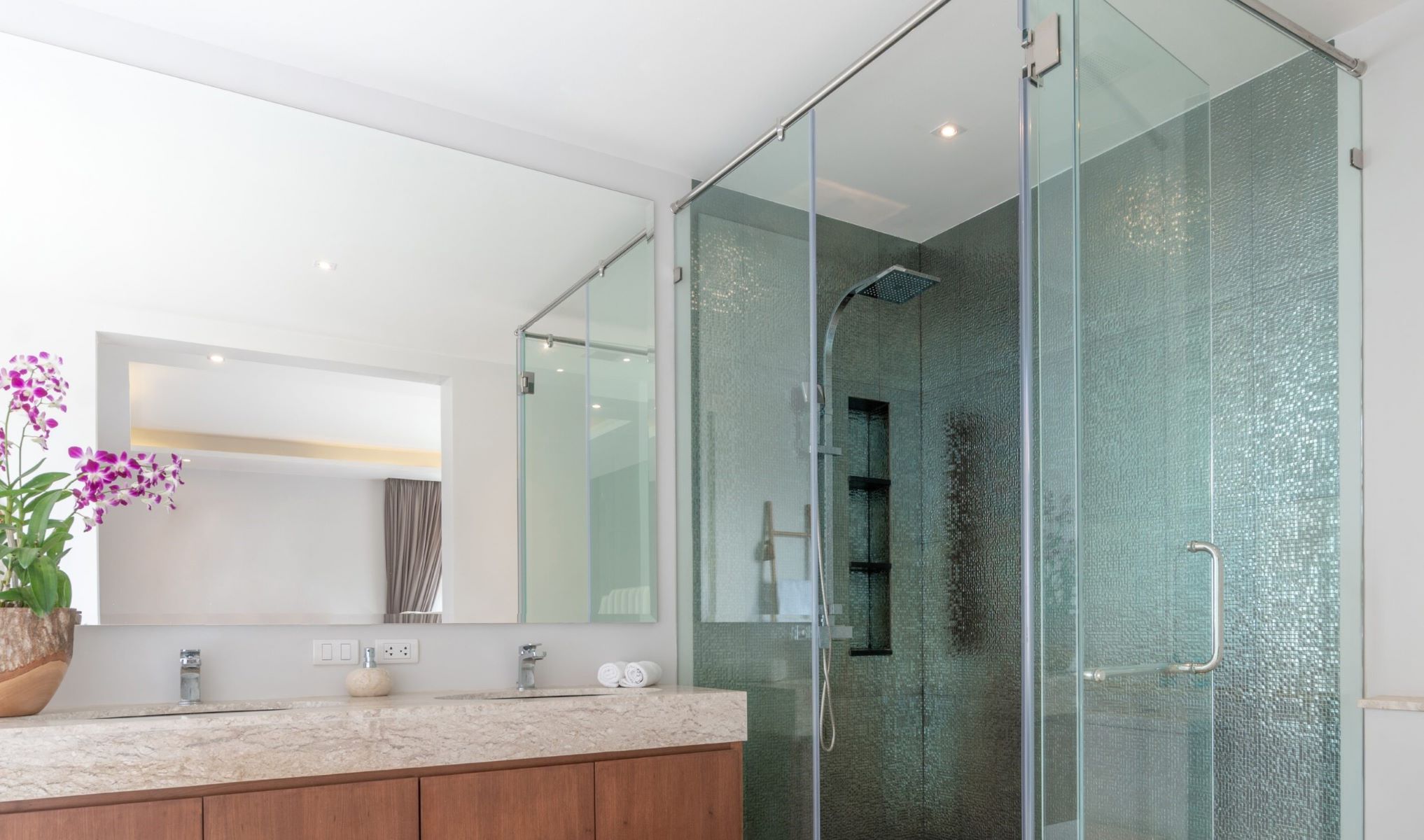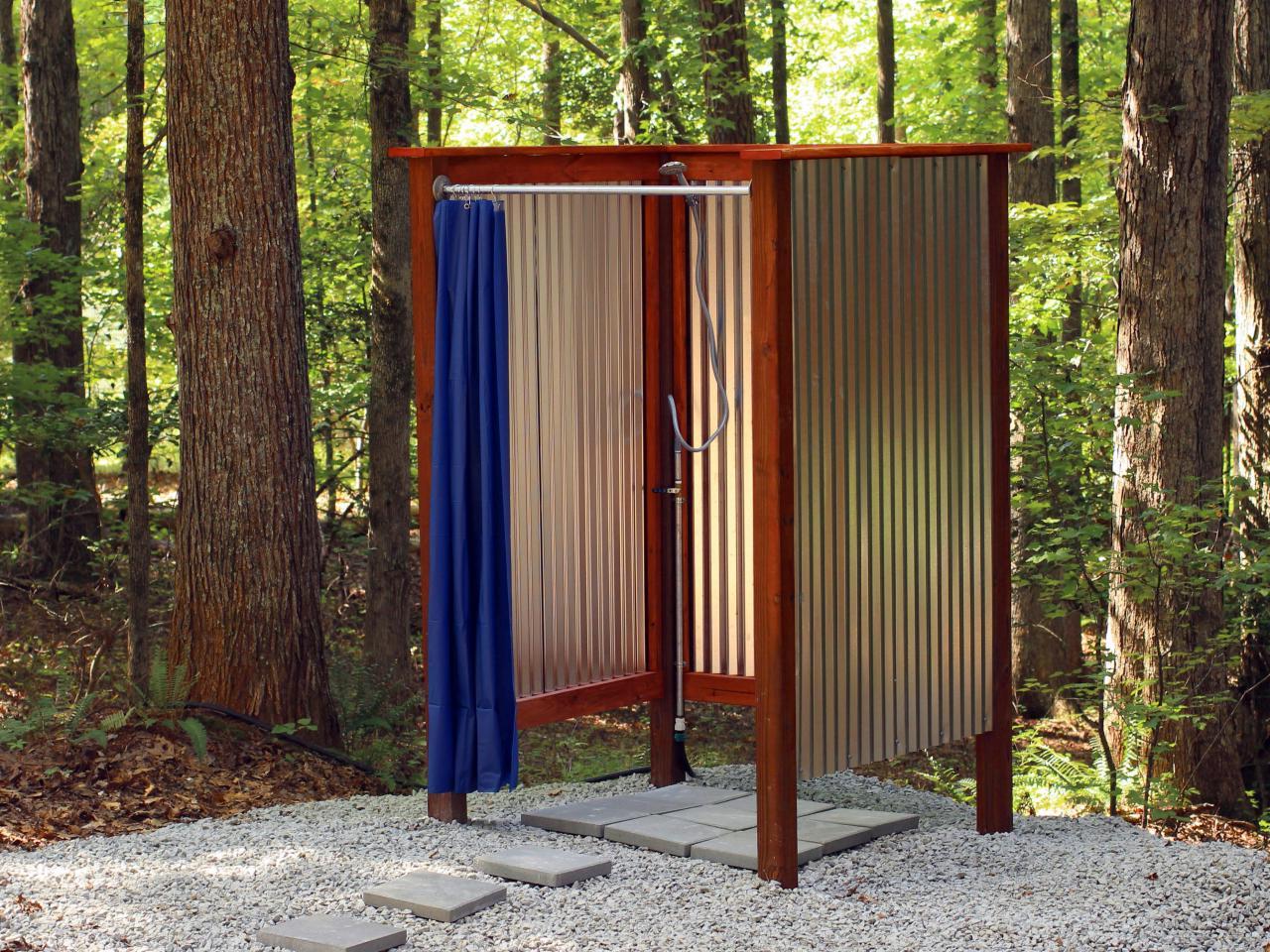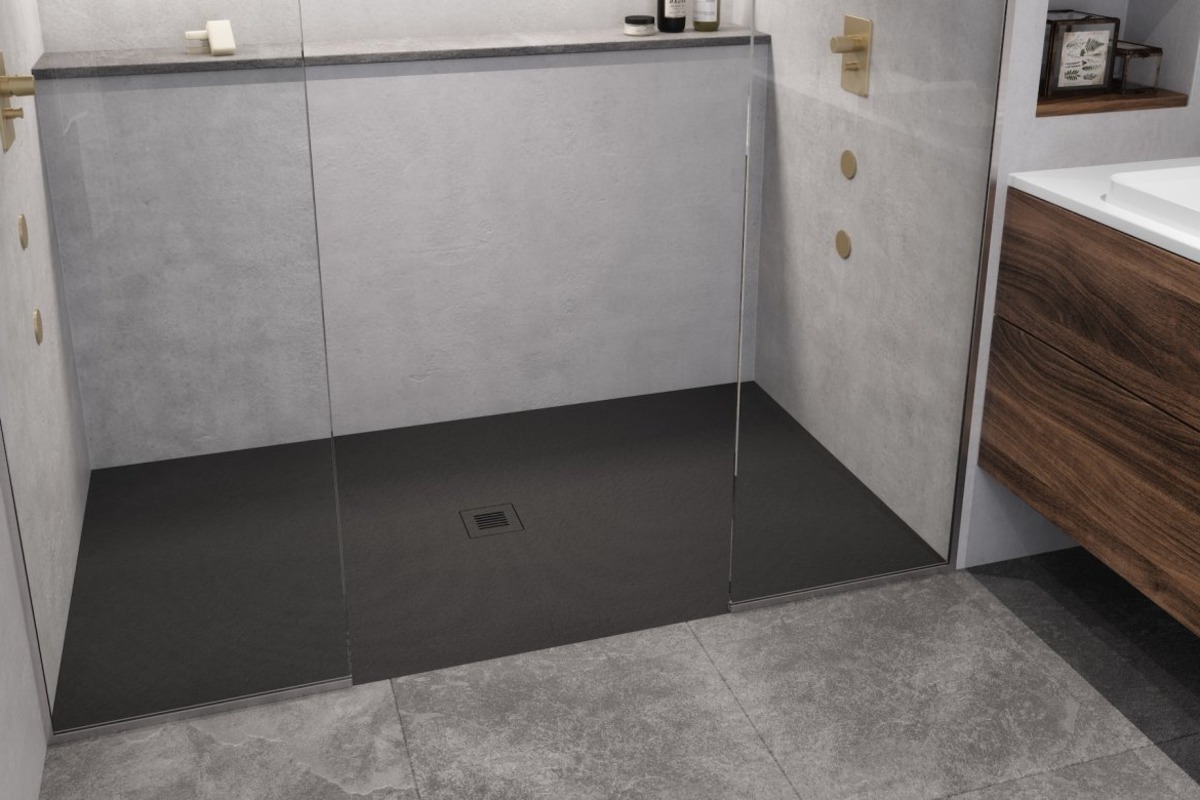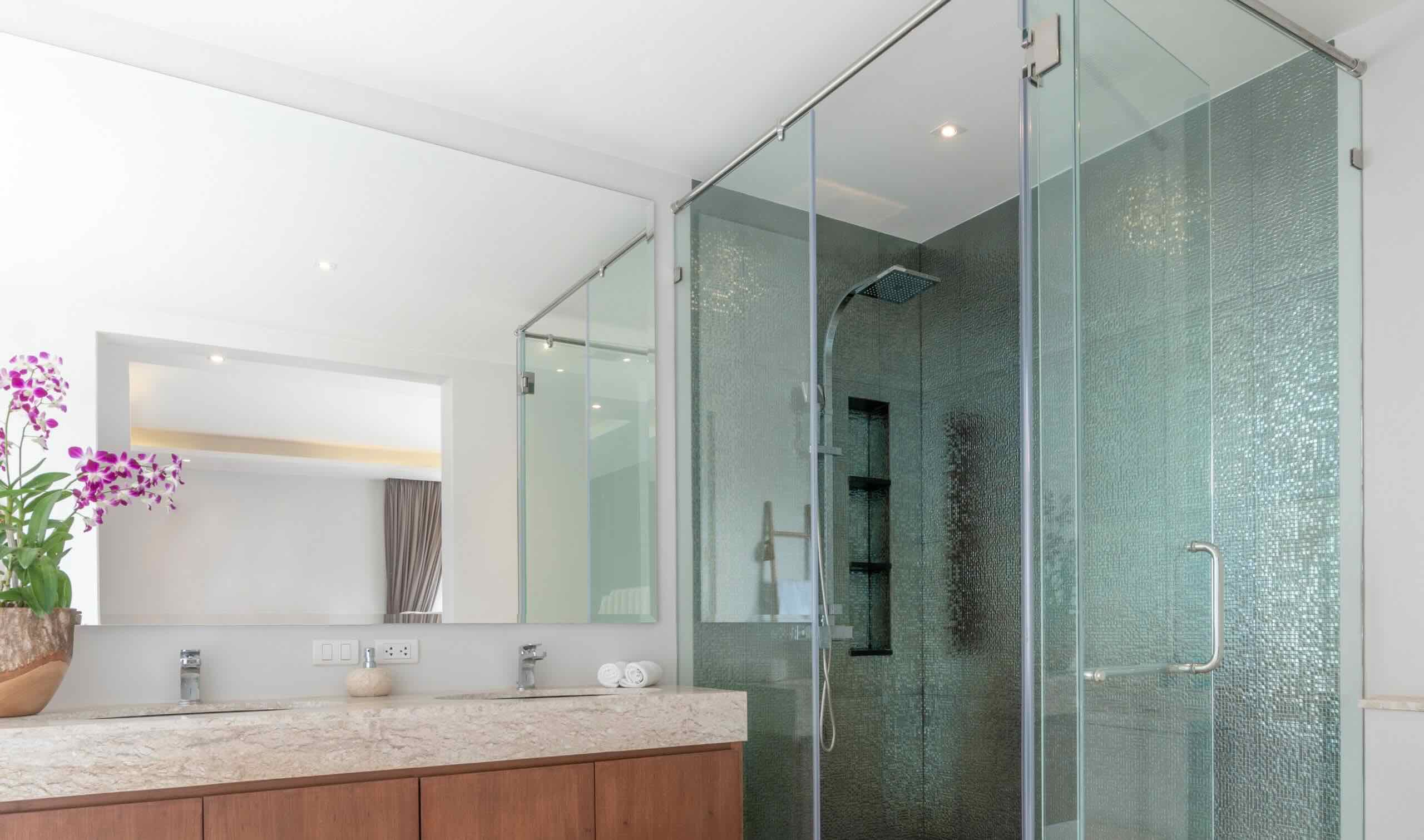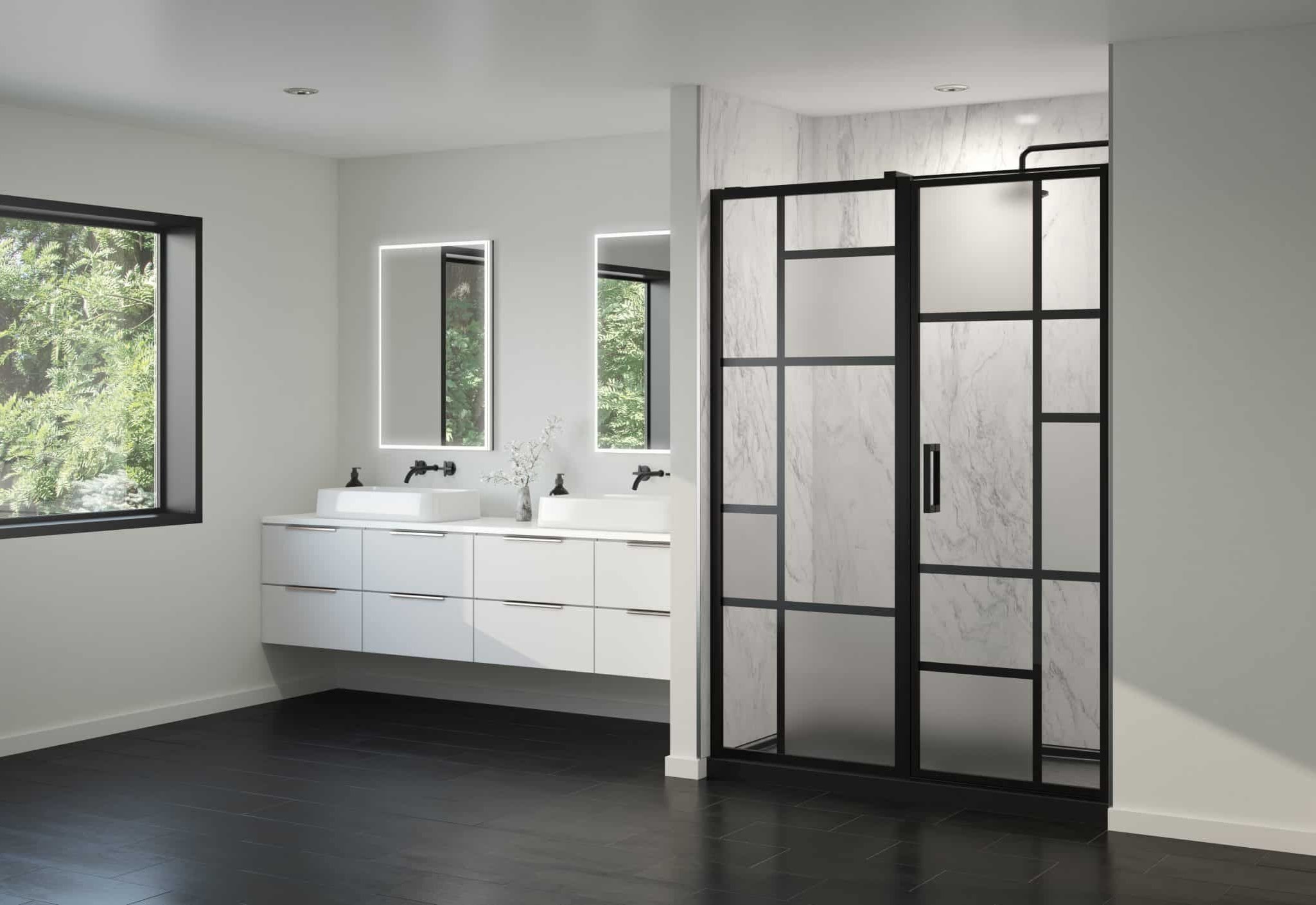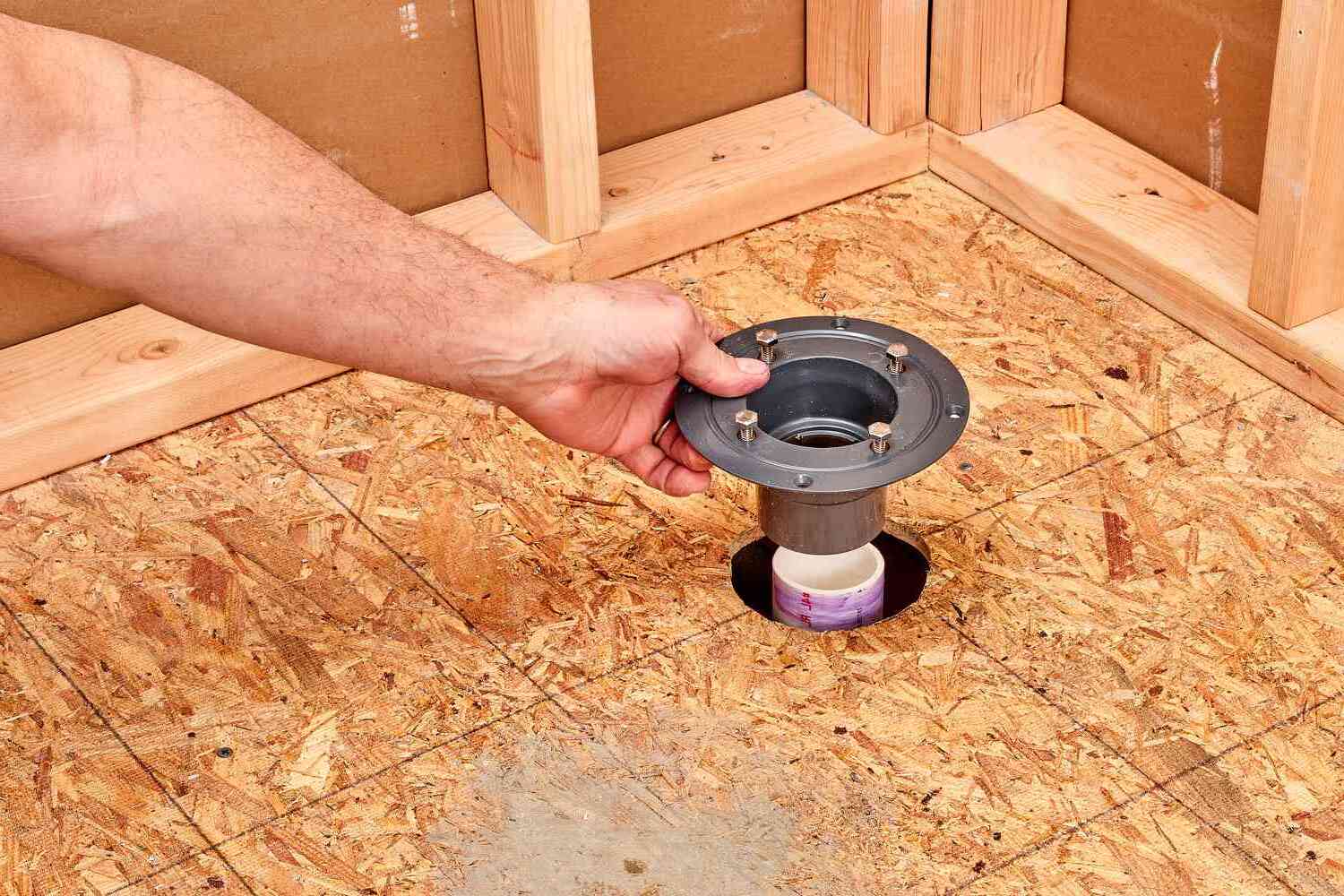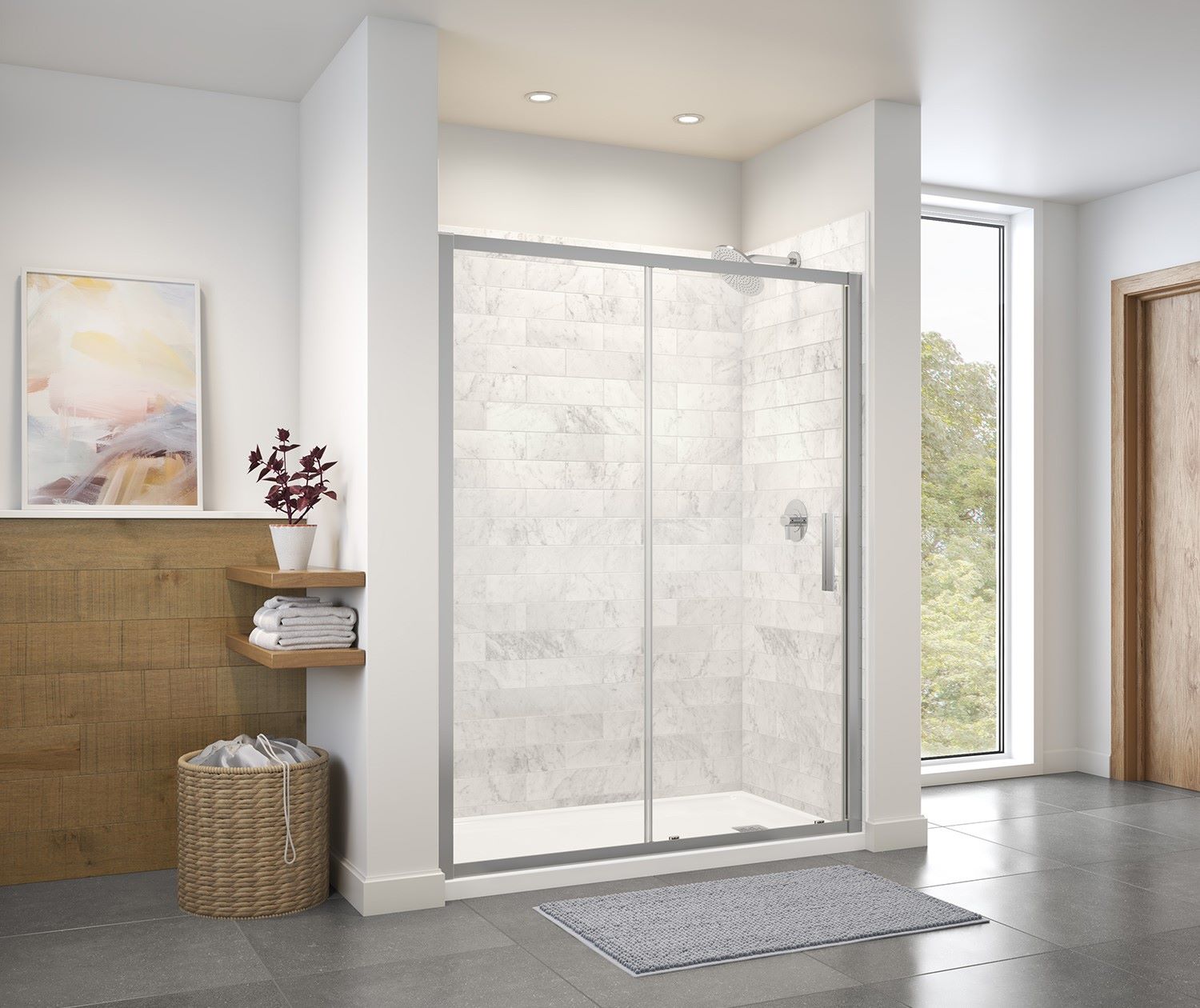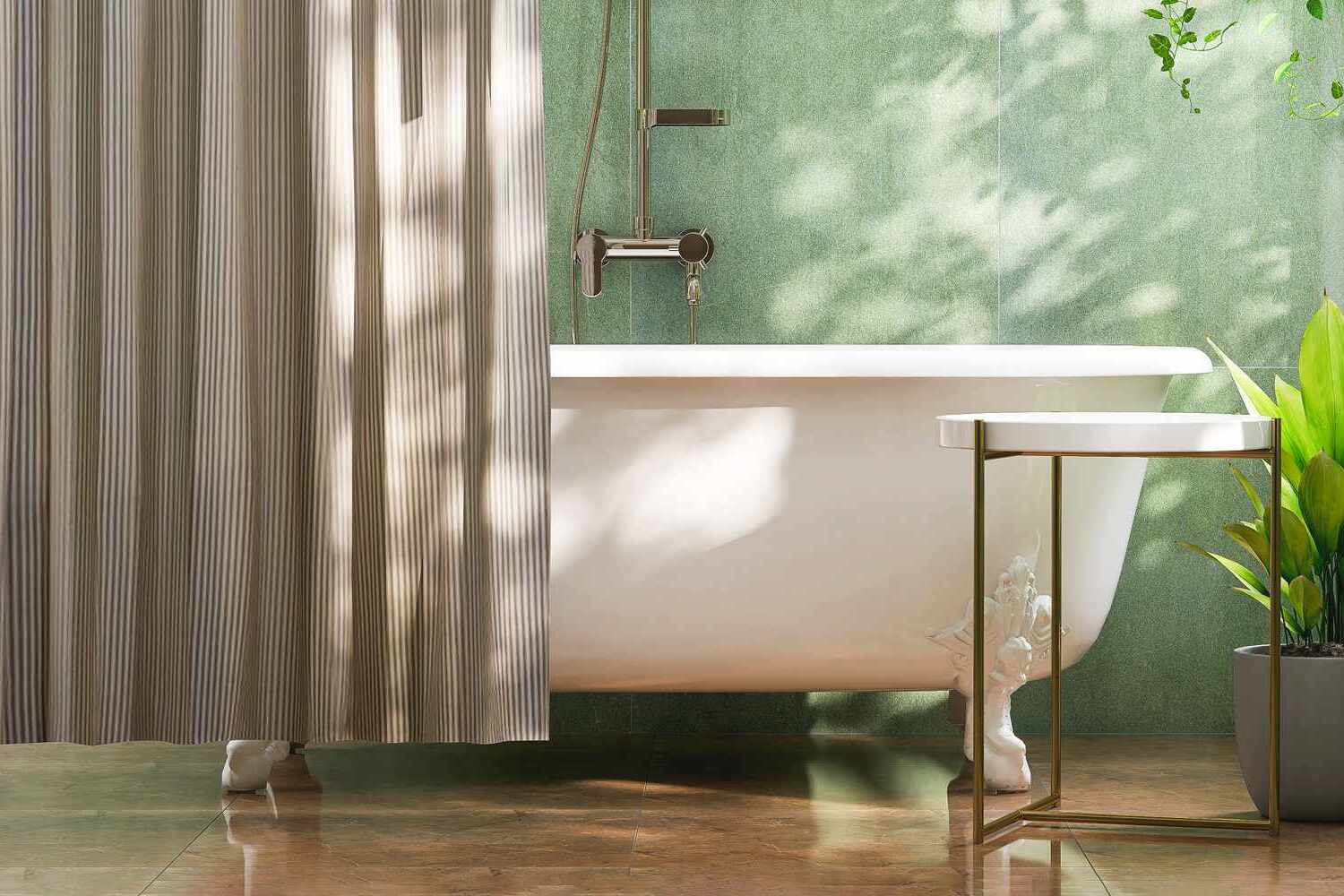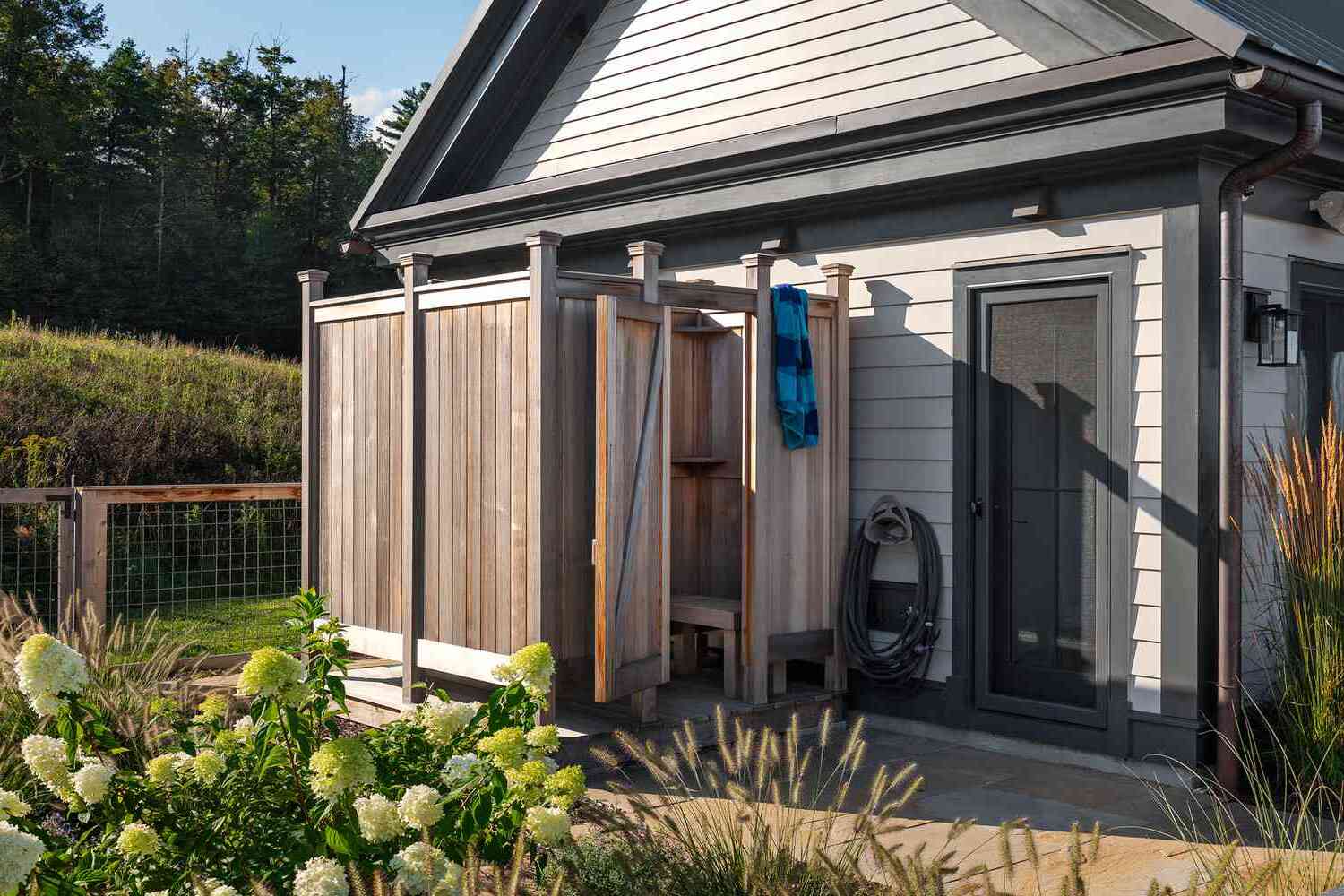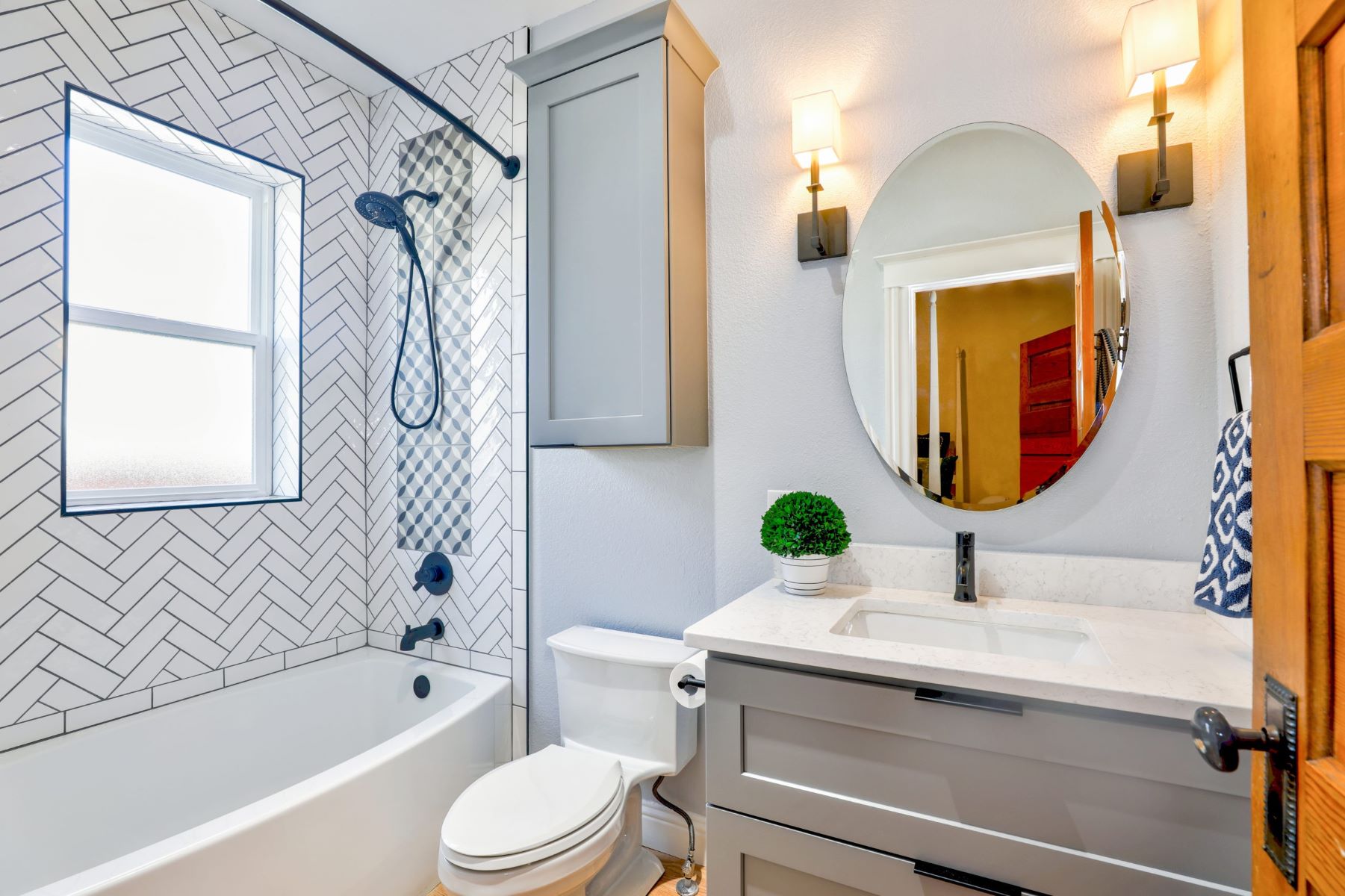Home>Home & Furniture>Bathroom>How To Build A Curbless Shower
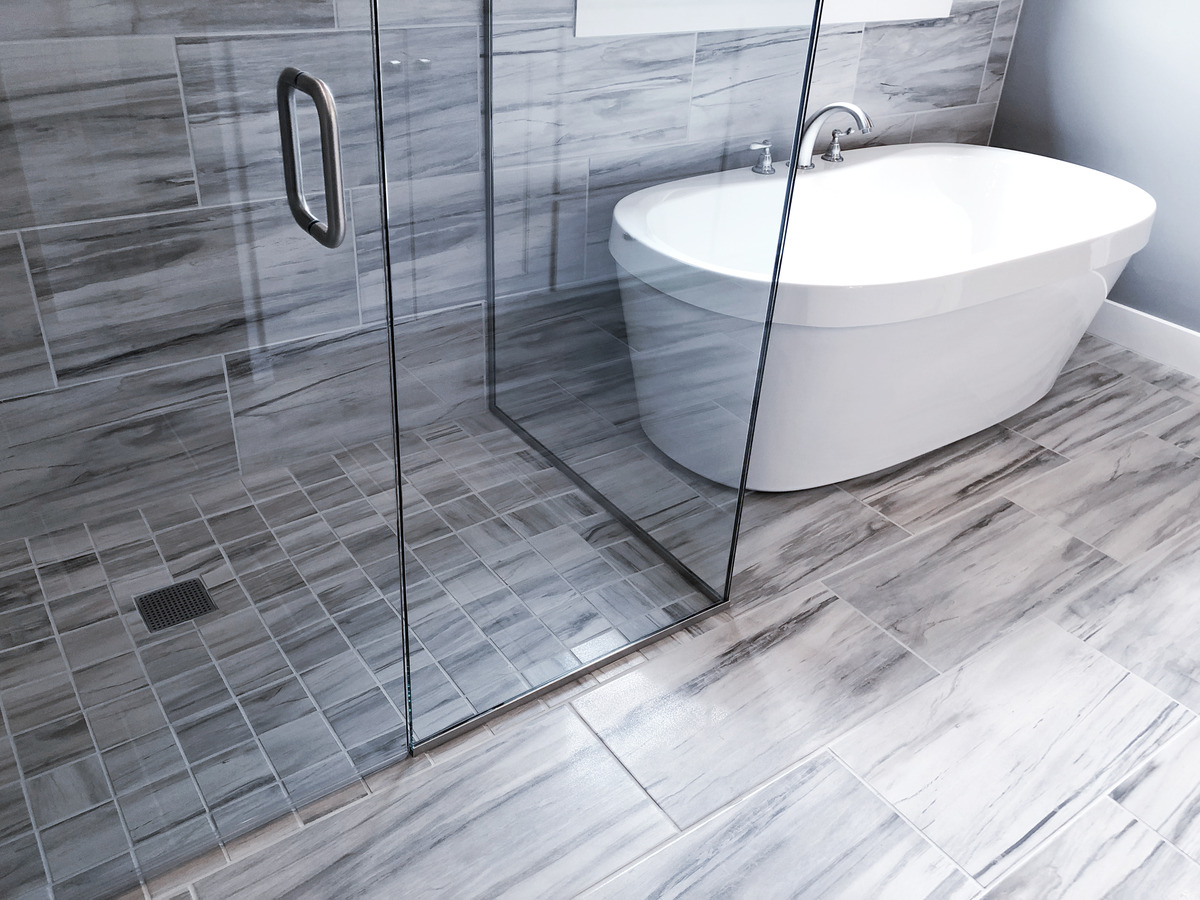

Bathroom
How To Build A Curbless Shower
Published: March 7, 2024
Editor-in-Chief with a decade in home renovation and a passion for vintage furniture. Diane is known for her weekend treasure hunts at flea markets, enriching our content with unique style insights.
Learn how to create a stylish and accessible bathroom with a curbless shower. Find expert tips and advice for your bathroom renovation project.
(Many of the links in this article redirect to a specific reviewed product. Your purchase of these products through affiliate links helps to generate commission for Twigandthistle.com, at no extra cost. Learn more)
Introduction
So, you're thinking about building a curbless shower. That's a great idea! Curbless showers are not only stylish and modern, but they also offer accessibility and ease of use for people of all ages and abilities. Whether you're renovating your bathroom or building a new one, a curbless shower can add a touch of luxury and functionality to your space. In this guide, we'll walk you through the step-by-step process of building your own curbless shower, from planning and designing to the finishing touches. Let's dive in and get started on creating the shower of your dreams!
Read more: How To Build A Shower
Planning and Designing Your Curbless Shower
When planning and designing your curbless shower, there are several important factors to consider. Here's how to get started:
-
Space Consideration: Assess the available space in your bathroom to determine the best location for your curbless shower. Consider the overall layout and how the shower will fit into the existing space.
-
Accessibility: One of the key benefits of a curbless shower is its accessibility. Ensure that the shower area is easily accessible for individuals of all abilities. This may involve incorporating wider doorways and ample space for maneuverability.
-
Style and Aesthetics: Think about the style and aesthetics you want to achieve with your curbless shower. Consider the overall design theme of your bathroom and how the shower will complement it. From sleek and modern to rustic and natural, there are various design options to explore.
-
Water Containment: Since a curbless shower lacks a traditional threshold, it's crucial to plan for proper water containment. This may involve strategic placement of showerheads, drains, and waterproofing materials to prevent water from spilling into the rest of the bathroom.
-
Consultation: If you're unsure about the technical aspects of designing a curbless shower, consider consulting with a professional contractor or designer. They can provide valuable insights and recommendations based on your specific needs and space.
By carefully planning and designing your curbless shower, you can ensure that it not only meets your functional requirements but also enhances the overall look and feel of your bathroom.
Choosing the Right Materials
Selecting the right materials for your curbless shower is essential for ensuring durability, functionality, and visual appeal. Here are the key materials to consider:
-
Waterproofing Membrane: Invest in a high-quality waterproofing membrane to protect the structural integrity of your shower. Look for products specifically designed for wet areas and ensure proper installation to prevent water damage.
-
Shower Pan: Opt for a reliable and well-constructed shower pan that suits the size and layout of your curbless shower. Consider materials such as fiberglass, acrylic, or custom-built tiled pans for a seamless and watertight solution.
-
Drainage System: Choose a high-performance linear drain or center drain system that effectively removes water from the shower area. Look for durable materials such as stainless steel or PVC to ensure long-term functionality.
-
Tile: When it comes to tiling the shower floor and walls, select non-slip, low-maintenance tiles that can withstand the rigors of daily use. Porcelain, ceramic, or natural stone tiles are popular choices for their durability and aesthetic versatility.
-
Grout and Sealant: Use high-quality grout and sealant to fill the gaps between tiles and protect against water infiltration. Opt for mold-resistant and waterproof products to maintain a clean and hygienic shower environment.
-
Glass Enclosure: If you plan to incorporate a glass enclosure, choose tempered glass panels with sturdy hardware for safety and longevity. Consider the transparency and thickness of the glass to achieve the desired visual impact.
-
Fixtures and Hardware: Select stylish and functional fixtures and hardware, such as showerheads, faucets, and handles, that complement the overall design of your curbless shower. Look for finishes that resist corrosion and are easy to clean.
By carefully selecting the right materials for your curbless shower, you can create a well-crafted and enduring shower space that meets both your practical and aesthetic needs.
Preparing the Subfloor
Preparing the subfloor is a crucial step in building a curbless shower, as it sets the foundation for a sturdy and level base. Here's how to prepare the subfloor for your project:
-
Assessment: Begin by assessing the condition of the existing subfloor. Ensure that it is structurally sound and free from any signs of water damage, rot, or unevenness. Address any issues with the subfloor before proceeding with the installation of the curbless shower.
-
Subfloor Reinforcement: If the existing subfloor requires reinforcement to support the weight of the curbless shower, consider adding additional floor joists or plywood to enhance its strength and stability. Consult with a structural engineer or contractor to determine the necessary reinforcements.
-
Sloping: Create a gentle slope in the subfloor to facilitate proper drainage within the shower area. This slope should direct water toward the drain to prevent pooling and promote efficient water removal. Use a slope mortar bed or self-leveling compound to achieve the desired slope gradient.
-
Waterproofing: Apply a waterproofing membrane over the entire subfloor surface within the shower area. This membrane acts as a barrier to prevent water from seeping into the subfloor and causing damage over time. Ensure that the waterproofing membrane extends beyond the shower area to create a seamless transition.
-
Barrier Installation: Install a waterproofing barrier at the perimeter of the shower area to contain any potential water runoff. This barrier, often made of materials such as PVC or rubber, helps prevent water from escaping the shower space and causing damage to surrounding areas.
-
Integration with Drain: Coordinate the subfloor preparation with the installation of the shower drain. Ensure that the slope of the subfloor aligns with the positioning of the drain to facilitate proper water flow. Test the compatibility and functionality of the drain within the sloped subfloor.
By meticulously preparing the subfloor for your curbless shower, you can establish a solid and water-resistant foundation that supports the overall integrity and functionality of the shower installation.
Waterproofing the Shower Area
Waterproofing the shower area is a critical step in the construction of a curbless shower to prevent water damage and ensure the longevity of the installation. Here's a detailed guide on how to effectively waterproof the shower area:
-
Preparation: Before applying any waterproofing materials, ensure that the shower area is clean, dry, and free from any debris or contaminants. Proper surface preparation is essential for the adhesion and effectiveness of the waterproofing products.
-
Waterproofing Membrane Selection: Choose a high-quality waterproofing membrane that is specifically designed for wet environments such as showers. Options include liquid-applied membranes, sheet membranes, and fabric-reinforced membranes. Consider the specific requirements of your shower area and select a membrane that offers superior waterproofing properties.
-
Application: Follow the manufacturer's instructions for the application of the waterproofing membrane. Use a brush, roller, or trowel to apply the membrane evenly across the shower floor, walls, and any other areas that will be exposed to water. Pay close attention to seams, corners, and transitions to ensure comprehensive coverage.
-
Sealing Joints and Gaps: Seal all joints, corners, and gaps with waterproofing tape or sealant to create a watertight barrier. This includes areas where the walls meet the floor, around plumbing fixtures, and at the perimeter of the shower. Properly sealed joints are essential for preventing water intrusion.
-
Curing and Drying: Allow the waterproofing membrane to cure and dry according to the manufacturer's recommended timeframe. Ensure that the area is well-ventilated during the drying process to promote proper adhesion and effectiveness of the membrane.
-
Quality Assurance: Conduct a thorough inspection of the waterproofing application to identify any areas that may require additional attention. Look for any signs of inconsistency, damage, or incomplete coverage. Address any issues before proceeding with the installation of the shower components.
-
Compatibility with Tile Installation: Consider the compatibility of the chosen waterproofing membrane with the subsequent tile installation. Some membranes may require specific adhesives or primers to ensure proper bonding with the tile materials. Verify the compatibility to avoid potential issues during the tiling process.
By meticulously waterproofing the shower area, you can safeguard the underlying structure from water damage, mold, and deterioration, ensuring a durable and watertight curbless shower for years to come.
Read more: How To Build A Walk In Shower
Installing the Drain
Installing the drain is a pivotal step in the construction of a curbless shower, as it facilitates proper water drainage and ensures the functionality of the shower space. Here's a comprehensive guide on how to effectively install the drain for your curbless shower:
-
Selecting the Drain Type: Choose a suitable drain type for your curbless shower, such as a linear drain or a center drain. Consider factors such as the shower layout, aesthetic preferences, and drainage efficiency when making your selection.
-
Positioning and Alignment: Determine the precise positioning and alignment of the drain within the shower area. Ensure that the drain is strategically located to promote efficient water flow and minimize standing water. Align the drain with the slope of the shower floor to facilitate proper drainage.
-
Subfloor Integration: Integrate the drain assembly with the prepared subfloor, ensuring a secure and watertight connection. Follow the manufacturer's guidelines for the installation of the drain components, including the clamping ring, waterproofing flange, and bonding of the drain body to the subfloor.
-
Waterproofing Compatibility: Verify the compatibility of the drain assembly with the waterproofing membrane applied to the subfloor. Ensure that the drain components seamlessly integrate with the waterproofing system to prevent any potential water leakage or seepage.
-
Connection to Drainage System: Connect the drain to the existing drainage system, ensuring proper alignment and secure connections. Verify that the drainpipe is sloped to facilitate the efficient discharge of water and prevent any blockages or backups.
-
Testing and Inspection: Conduct a thorough test of the drain system to ensure proper functionality and water drainage. Pour water into the shower area and observe the flow towards the drain. Check for any signs of leakage, pooling, or inadequate drainage.
-
Grate Installation: Install the grate or cover over the drain opening, ensuring a snug fit and proper alignment. Choose a grate design that complements the overall aesthetic of the curbless shower while providing efficient water drainage.
By meticulously installing the drain for your curbless shower, you can establish a reliable and effective water drainage system that supports the functionality and longevity of the shower installation.
Building the Slope
Building the slope in a curbless shower is a critical step that ensures proper water drainage and prevents water from pooling on the shower floor. Here's a detailed guide on how to construct the slope for your curbless shower:
-
Slope Design: Determine the slope design that best suits your shower area. A typical slope for a curbless shower ranges from 1/4 inch to 1/2 inch of slope per foot towards the drain. This gradual slope allows water to flow efficiently and prevents standing water.
-
Substrate Preparation: Prepare the shower floor substrate for the slope installation. Ensure that the substrate is clean, level, and free from any debris or obstructions. Proper substrate preparation is essential for the effectiveness of the slope construction.
-
Slope Creation: Use a slope mortar bed or a self-leveling compound to create the desired slope on the shower floor. Follow the manufacturer's instructions for mixing and applying the mortar or compound. Work systematically to achieve a consistent and uniform slope across the entire shower area.
-
Slope Consistency: Use a long straightedge, such as a level or a screed board, to verify the consistency and accuracy of the slope. Check for any low spots or irregularities that may impede water flow. Make adjustments as needed to ensure a smooth and even slope towards the drain.
-
Integration with Waterproofing: Coordinate the slope construction with the existing waterproofing membrane. Ensure that the slope seamlessly transitions into the waterproofing layer, creating a continuous barrier against water infiltration. Pay attention to the interface between the slope and the surrounding walls to maintain a watertight seal.
-
Curing and Drying: Allow the slope mortar bed or self-leveling compound to cure and dry thoroughly before proceeding with the next steps of the shower installation. Follow the recommended curing time to ensure the structural integrity and stability of the slope.
-
Quality Assurance: Conduct a final inspection of the constructed slope to confirm its effectiveness and functionality. Test the flow of water across the slope to verify proper drainage towards the drain. Address any issues or inconsistencies to ensure a reliable and efficient slope.
By meticulously building the slope in your curbless shower, you can establish a well-engineered water management system that promotes effective drainage and enhances the overall performance of the shower space.
Tiling the Shower Floor
Tiling the shower floor is a crucial step in the construction of a curbless shower, as it not only enhances the visual appeal of the space but also ensures a durable and easy-to-maintain surface. Here's a detailed guide on how to effectively tile the shower floor:
-
Tile Selection: Choose non-slip, low-maintenance tiles that are suitable for wet environments. Porcelain, ceramic, and natural stone tiles are popular choices for their durability and aesthetic versatility. Consider the size, color, and texture of the tiles to achieve the desired look and functionality.
-
Preparation: Ensure that the shower floor substrate is clean, level, and free from any debris or irregularities. Apply a layer of thin-set mortar to create a smooth and even surface for the tile installation. Use a notched trowel to spread the mortar evenly across the floor.
-
Layout Planning: Plan the layout of the tiles to ensure a balanced and visually appealing arrangement. Consider the positioning of the drain and any cut tiles that may be required along the edges of the shower floor. Dry-fit the tiles to determine the optimal placement before proceeding with the installation.
-
Tile Installation: Apply a layer of thin-set mortar to the shower floor using a notched trowel. Press the tiles firmly into the mortar, ensuring a consistent and level surface. Use tile spacers to maintain uniform grout joints and allow for proper water drainage. Pay attention to the alignment and spacing of the tiles for a professional finish.
-
Cutting and Trimming: Use a tile cutter or wet saw to make precise cuts and trims as needed to fit the tiles around the perimeter of the shower floor and the drain. Measure carefully to achieve accurate cuts and ensure a seamless integration of the tiles.
-
Grouting: Once the tiles are set and the mortar has cured, apply grout to fill the joints between the tiles. Use a grout float to spread the grout evenly and ensure complete coverage. Remove any excess grout from the tile surfaces and smooth the grout lines for a clean and polished look.
-
Sealing: Consider applying a penetrating sealer to the grout lines and the tiled surface to protect against water penetration and staining. Follow the manufacturer's recommendations for the application of the sealer to enhance the longevity and resilience of the tiled shower floor.
By meticulously tiling the shower floor, you can create a visually stunning and resilient surface that complements the overall design of your curbless shower while providing long-lasting functionality and ease of maintenance.
Finishing Touches and Considerations
As you near the completion of your curbless shower project, it's essential to focus on the finishing touches and consider important factors that will contribute to the overall functionality and aesthetics of the shower space. Here are some key aspects to address during this phase:
-
Shower Fixtures and Accessories: Install high-quality and stylish fixtures and accessories to enhance the usability and visual appeal of your curbless shower. Choose showerheads, faucets, and handles that complement the overall design theme of your bathroom. Consider features such as adjustable water pressure, handheld showerheads, and convenient shelving for bath products.
-
Seating and Storage: If space allows, consider incorporating built-in seating or storage options within the shower area. This can provide added convenience and comfort, especially for individuals who may benefit from seating while showering. Built-in niches or shelves can also offer practical storage for toiletries and bath essentials.
-
Grab Bars and Safety Features: For enhanced safety and accessibility, consider installing grab bars and other safety features within the shower space. Strategically positioned grab bars can provide stability and support, particularly for individuals with mobility challenges or those who require assistance while showering.
-
Lighting and Ventilation: Ensure adequate lighting and ventilation within the shower area to create a comfortable and inviting environment. Consider installing waterproof LED lighting or a well-placed skylight to brighten the space. Proper ventilation helps prevent moisture buildup and mold growth, contributing to a healthier shower environment.
-
Maintenance and Cleaning Considerations: Choose materials and finishes that are easy to clean and maintain. Opt for grout and sealant products that resist mold and mildew, and select non-porous tile options that are simple to wipe down. Consider the long-term maintenance requirements of your curbless shower to ensure lasting beauty and functionality.
-
Accessibility and Universal Design: If designing a curbless shower with accessibility in mind, adhere to universal design principles to accommodate individuals of all abilities. Ensure that the shower space is easily navigable, with ample room for maneuvering mobility aids if necessary. Pay attention to slip-resistant flooring and clear sightlines for added safety.
-
Aesthetic Details: Pay attention to the finer aesthetic details, such as the choice of tile patterns, color schemes, and decorative accents. These elements can significantly impact the overall look and feel of your curbless shower, adding personality and style to the space.
By addressing these finishing touches and considerations, you can elevate the functionality, safety, and visual appeal of your curbless shower, creating a space that not only meets your practical needs but also reflects your personal style and attention to detail.
Conclusion
In conclusion, building a curbless shower is a rewarding endeavor that combines practicality, accessibility, and style. By following the step-by-step process outlined in this guide, you can create a luxurious and functional shower space that enhances the overall appeal of your bathroom. From meticulous planning and design to the selection of high-quality materials, proper subfloor preparation, and the installation of essential components such as the drain and waterproofing, each stage plays a crucial role in the successful construction of a curbless shower. The finishing touches and considerations, including fixtures, safety features, and maintenance considerations, further contribute to the overall comfort and usability of the shower space. Whether you're aiming to achieve a spa-like retreat or a universally accessible shower environment, the careful execution of each phase ensures a well-crafted and enduring curbless shower that meets your specific needs and preferences. Embrace the creativity and attention to detail required for this project, and enjoy the satisfaction of having a beautifully constructed curbless shower that adds value and elegance to your home.

